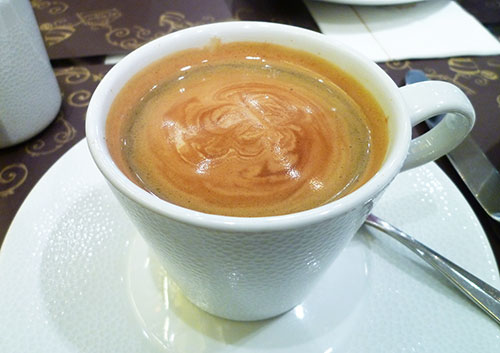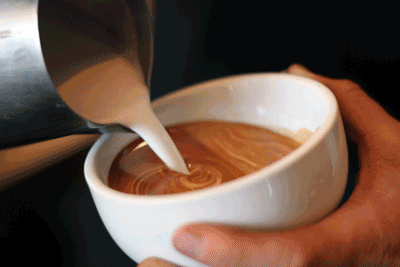How to Tell if Your Coffee is Good?
As a coffee enthusiast, one of the first things you learn is that the appearance of your coffee can give you a lot of insight into its quality and flavour. In fact, just by looking at your coffee, you can tell a lot about how it was brewed, the roast level of the beans, and even the freshness of the coffee. Here are some tips on how to tell if your coffee is good just by looking at it:

- Colour: The colour of your coffee can give you a lot of information about its roast level. Lighter roasts tend to be a lighter brown, while darker roasts are closer to black. A medium roast will be somewhere in between. If your coffee is a very dark brown or black, it may be over-roasted, which can result in a burnt taste.
- Clarity: A good cup of coffee should be clear and not cloudy. If you notice any sediment or cloudiness in your coffee, it may be a sign of poor-quality beans or an improper brewing technique.
- Crema: Crema is the layer of foam that forms on top of an espresso shot. A good crema should be thick and creamy, with a caramel-coloured layer on top. If your crema is thin and quickly dissipates, it may be a sign that your coffee is stale or that the brewing temperature was too low.
- Bubbles: When you first pour your coffee, you may notice bubbles on the surface. These bubbles are a sign of carbon dioxide, which is released during the roasting process. A good cup of coffee will have small, consistent bubbles that quickly disappear. If your bubbles are large and inconsistent, it may be a sign of poor-quality beans or a poor brewing technique.
- Aroma: Finally, the aroma of your coffee can tell you a lot about its quality. Freshly brewed coffee should have a strong, pleasant aroma that is indicative of the coffee’s flavour profile. If your coffee has a weak or unpleasant aroma, it may be a sign that it is stale or of poor quality.

What Flavour Profiles are Present with each type of Coffee generally?
Different types of coffee can exhibit a wide range of flavour profiles based on factors such as the origin of the beans, the roasting process, and brewing methods. While it’s challenging to generalize coffee flavours for all types, here are some common flavour profiles associated with different coffee varieties:
- Arabica: Arabica beans are known for their delicate and nuanced flavours. They often have a mild acidity and a wide range of flavours, including fruity notes like citrus, berries, and tropical fruits. They can also have floral, chocolate, or nutty undertones.
- Robusta: Robusta beans tend to have a stronger and more robust flavours compared to Arabica. They often have a higher caffeine content and exhibit earthy, woody, or nutty flavours. They can also have hints of chocolate, caramel, or dark spices. Robusta beans are frequently used in espresso blends for their crema-enhancing properties.
- Colombian: Colombian coffee is renowned for its balanced and well-rounded flavour profile. It often features medium acidity and a smooth, rich body. Colombian coffee can exhibit a wide array of flavours, including caramel, chocolate, nuts, and subtle fruitiness.
- Ethiopian: Ethiopian coffee is celebrated for its complex and vibrant flavours. It is often characterized by floral and fruity notes, such as jasmine, bergamot, blueberries, strawberries, or citrus. Ethiopian coffee can have a range of acidity levels, from bright and tangy to more mellow and wine-like.
- Brazilian: Brazil is the largest coffee producer globally, and Brazilian coffee is known for its mild and nutty flavour profile. It typically offers a low to medium acidity and a smooth, medium body. Brazilian coffee can have hints of chocolate, caramel, peanut, and sometimes fruity undertones.
- Sumatran: Sumatran coffee, from Indonesia, often has a full-bodied and rich flavour. It can have earthy, herbal, and sometimes spicy notes, with hints of tobacco or cedar. Sumatran coffee can also exhibit flavours like dark chocolate, molasses, and occasionally tropical fruit undertones.
These flavour profiles are just general guidelines, and individual coffees can vary widely. Additionally, factors like the roast level and brewing method will influence the final flavours experienced in a cup of coffee. Exploring different types of coffee and experimenting with brewing techniques can provide a more comprehensive understanding of the various flavour profiles available.
Conclusion.
In conclusion, by taking a few moments to examine the appearance of your coffee, you can gain a lot of insight into its quality and flavour. By paying attention to the colour, clarity, crema, bubbles, and aroma, you can tell whether your coffee is fresh, properly brewed, and of good quality. So, the next time you brew a cup of coffee, take a moment to appreciate its appearance before taking your first sip.
Author.
Brendon McAliece is a multi-lingual expat who brings over three decades of flight simulator/PC building experience as well as over two decades of real-world jet fighter experience as a weapons/egress technician. He holds a sport pilot certificate giving him real-world flying experience. Hi travels have taken him from Europe to the Middle East, Asia and his home of Australia. He has a passion for travel, languages, Flight simulation as well as Guitaring and Coffee. You can read more in his blogs below.

Learn more @
DreamingGuitar.com – DreamingCoffee.com – LetsFlyVFR.com
Home – Blog – Shop – About
As an Amazon affiliate I may earn on qualifying sales.











